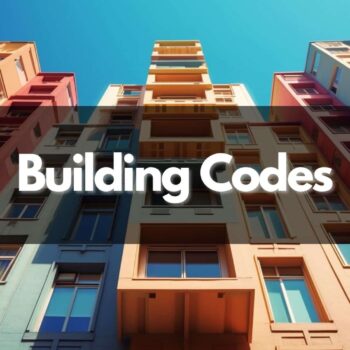There are various government-based organizations that buy mortgages from lenders and package these loans into mortgage-backed securities or hold them in their portfolios. These companies help stabilize the mortgage market by investing in them. They expand the pool of funds available for purchasing houses and make the secondary mortgage market more liquid. This also lowers the interest rates paid by mortgage borrowers and homeowners.
Fannie Mae is one such company that works in the secondary mortgage market. In this post, we’ll learn more about how Fannie Mae works in real estate.
What is Fannie Mae?
Fannie Mae, or Federal National Mortgage Association (FNMA), is a government-sponsored Enterprise (GSE) that offers mortgages to moderate to low-income borrowers. The organization was established in 1938 by the U.S. Congress to stimulate the housing market because of the economic conditions. Fannie Mae ensured the availability of affordable homes and sustainable homeownership during the period of the Great Depression.
Fannie Mae uses mortgage-backed securities (MBS) to secure mortgages. The company plays an essential role in the country’s financing system by providing stability and liquidity in the mortgage market. It is an active member of the secondary mortgage market that facilitates the buying and selling of mortgages.
How do Fannie Mae Loans Work?
Fannie Mae doesn’t provide loans; it invests in the mortgage market and allows the banks and credit unions to fund or underwrite more mortgages. It purchases and guarantees mortgages as a secondary mortgage market participant. Fannie Mae is among the two largest mortgage purchasers in the secondary market; the other is Freddie Mac. Fannie Mae purchases mortgages from the secondary market and then pools all the mortgages to create a mortgage-backed security.
A mortgage-backed security is backed by collateral through a single mortgage or a pool of mortgages. These mortgages are purchased by banks, credit unions, investment banks, pension funds, and insurance companies. When a bank or credit union receives a loan application, they verify the income and property value and then close the loan. After the loan is closed, Fannie Mae buys these loans verified by the lenders.
Loan Modifications
A loan modification is the process of changing the terms and conditions of an existing mortgage. These terms and conditions were originally agreed upon by the lender and the borrower. However, sometimes it is difficult for the borrower to make mortgage payments, and they request a change. This change can include an extension of the repayment term, a reduction in interest rate, or choosing a different type of loan. Borrowers request a loan modification, and these modifications serve as a relief plan for them because they’re having difficulties with the payments.
Fannie Mae also offers loan modifications, which means that it changes the terms of a loan provided by a lender. The changes may include a change in interest rate, changes in repayment terms, or an offer of a different type of loan to replace the existing loan. Loan modifications are needed when the borrower cannot repay the existing loan.
Fannie Mae can make loan modifications for any type of loan. Sometimes borrowers can also get government assistance in loan modifications. However, not all applicants are eligible for loan modifications; only the successful applicants are represented by professional or legal counsel.
Fannie Mae Mortgage Requirements
Fannie Mae requires that mortgage lenders must comply with a few requirements. The following are the main requirements of Fannie Mae mortgages:
Credit Score
To qualify for loans with Fannie Mae, the applicant must have a credit score of at least 620. The qualification criteria for Fannie Mae mortgages differ slightly from other mortgages. For instance, if there are more than two borrowers on a mortgage, the qualifying credit score is the average of the median credit score of the borrowers. This differs from other mortgages where the borrowers’ lowest median credit score is counted.
Down Payment
The down payment requirement for one-unit primary residences is around 3% to 5%. The requirement for down payments is higher for investment properties and second homes.
Debt-to-income Ratio
The debt-to-income ratio compares the monthly debt payments and your monthly income to determine the borrowing risk. The DTI shouldn’t be higher than 50% for qualifying for a Fannie Mae loan.
Reserves
A Fannie Mae loan requires applicants to have 2 to 6 months of reserves. Reserve is the number of mortgage payments that tells about how the borrower will be able to handle the mortgage in case of loss of income or financial emergency.
Types of Fannie Mae Programs
Fannie Mae invests in the secondary mortgage market and offers programs to help homebuyers get mortgages for purchasing homes.
HomePath
This program allows borrowers to get mortgages at low down payments. First-time home buyers can pay as less as a 3% down payment if they can’t afford high upfront costs. HomePath offers real-estate-owned properties (REO) that have been foreclosed and are in possession for reselling.
HomeReady Mortgage
HomeReady mortgages allow homeowners to purchase homes at lower down payments. These programs allow those buyers to qualify with a low credit score and moderate to low income. These products are available for first time and repeat home buyers.
HomeStyle Renovation
HomeStyle Renovation is a program offered by Fannie Mae to help with the renovation and repairs of your home. The borrowers can include the money for renovations and repairs while purchasing a mortgage or refinancing it. The borrowers can obtain 75% of the home price and renovation costs.
RefiNow
The RefiNow program allows borrowers to refinance their mortgages. These programs are for low-income mortgage holders who find it difficult to pay mortgages at high rates and need to refinance with a mortgage that offers lower rates. If a borrower is eligible for RefiNow, they can have a 0.5% reduction in their interest rates, reducing their mortgage payments.
Tenant-In-Place Rental Program
The tenant-in-place rental program allows the tenants in Fannie Mae-owned properties to continue paying rent at the current market rate in case the property is being foreclosed upon. The tenants might sign a new lease agreement or keep the current lease.
Mortgage Help Network
Mortgage Help Network is a program that allows homeowners with Fannie Mae-owned loans to get help with their monthly mortgage payments. Homeowners can consult with the Department of Housing and Urban Development, and the counselor there will guide them according to their current situation.
Fannie Mae vs. Freddie Mac
Fannie Mae and Freddie Mac are both government-backed mortgage organizations that help low-income borrowers with their initial down payments. However, a few differences make these programs different from each other. The way these companies operate, their qualification criteria, and their loan programs differ. The following differences will help you understand how both of these companies operate:
| Fannie Mae | Freddie Mac | |
| Year of establishment | 1938 | 1970 |
| Mortgage source | From large commercial banks | From smaller banks and lenders |
| Aim of creation | To stabilize the housing market during the Great Depression | To lower the overall mortgage rates |
| Qualifying income | 100% of the Area’s Median Income | 80% of the Area’s Median Income |
| Credit score | 620 for fixed-rate mortgages640 for adjustable-rate mortgages | 620 |
| Down payment | 3% | 3% |
| Debt-to-income ratio | 36% to 45% | 36% to 45% |
| Main program | HomeReady | HomePossible |
Fannie Mae Examples
Example: Sam took a mortgage on his property worth $375,000 at the time of loan commencement. He has to pay $2,380 monthly payments, including principal and interest, property taxes, and homeowner’s insurance. The mortgage term was 30 years, and the interest rate was 11%. Considering these details, the closing cost was estimated at $425,000 at the time of loan maturity. Sam found it difficult to make monthly payments, so he got a loan modification from Fannie Mae. The loan has been modified, and the new details are as follows:
- Interest rate: 4.25%
- Monthly payment: $2150
- Term: 40 years
After the loan modification, Sam had a monthly payment reduction of 25%, including taxes and insurance. The monthly payment schedule is quite affordable compared to the previous one.
Frequently Asked Questions
Why Is Fannie Mae Important?
Fannie Mae makes it easier for the banks to provide more mortgages. The company buys mortgages from all financial institutions so that these institutions have enough funds to keep providing mortgages to homebuyers. Fannie Mae makes the secondary mortgage market more liquid and stable by purchasing mortgages from these banks and credit unions.
How to Apply for a Mortgage Loan Modification?
To apply for a mortgage loan modification, Fannie Mae requires some information from the borrower. For instance, the borrower must provide mortgage information, the borrower’s financial condition, and the type of financial hardship. The programs offered by Fannie Mae have different requirements for loan modification and depend on the amount of mortgage the borrower owes and the property used as collateral. Once the application for a loan modification is approved, the borrower will get a new loan with new terms and conditions.
Did Fannie Mae Ever Face a Financial Crisis?
Fannie Mae was about to collapse during the financial crisis of 2007 and 2008. The company was close to default because most mortgages it held defaulted. During this financial crisis, the Federal Housing Finance Agency (FHFA) declared that it would take over Fannie Mae and Freddie Mac. Congress bailed out Fannie Mae and Freddie Mac and put them in conservatorship.
What Would Happen If There Was no Fannie Mae?
If Fannie Mae didn’t exist, lenders would face liquidity issues because no one could purchase mortgages from the industry. Since lenders wouldn’t have enough capital to provide funds for mortgages, they would impose more restrictions on the borrowers. Obtaining mortgages in this condition would be more difficult.
What to Know for the Real Estate Exam
Fannie Mae is a government-backed company that buys mortgages and releases cash for banks and credit unions to continue providing mortgages to common people. It is a secondary market lender and sets guidelines for mortgages that many organizations have to abide by. The creation of Fannie Mae and its Mortgage-Backed Securities (MBS) has made it easier for homebuyers to obtain mortgages because of the increase in lenders in the mortgage market. The organization helps stabilize the mortgage market by reducing the cost of borrowing and making housing affordable. If you want to ace your real estate exams, go through these easy to learn real estate terms.












